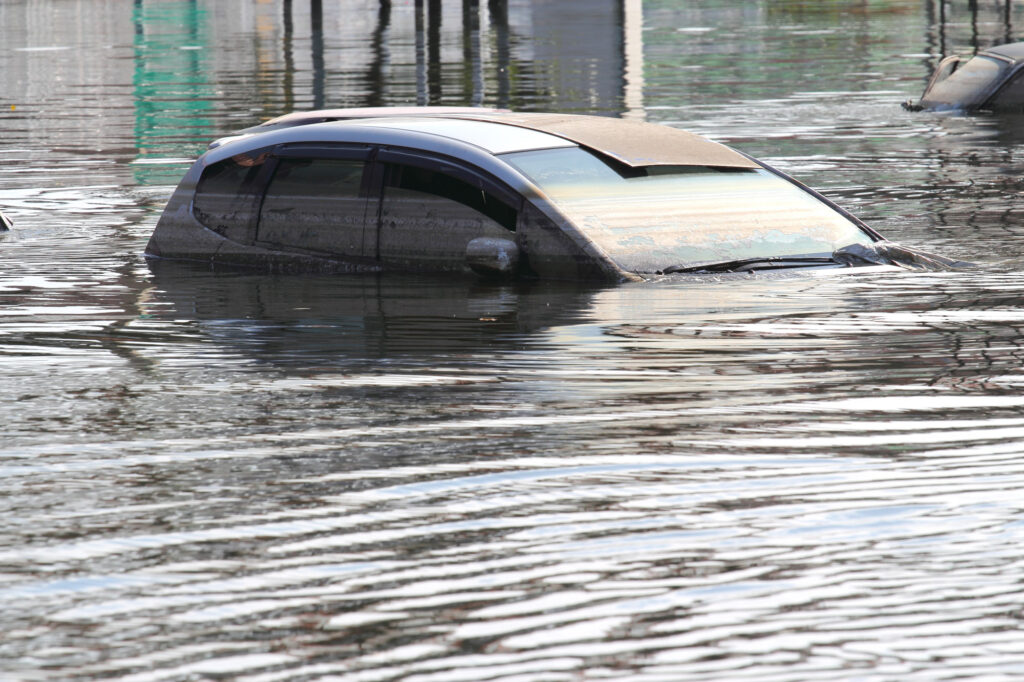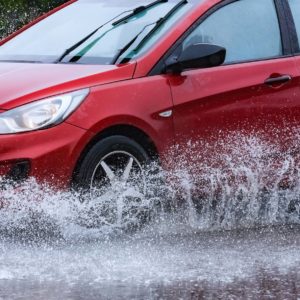Natural calamities like heavy rains can be unforgiving一even to vehicles.
And when the water rises too fast, drivers can’t help leaving their cars behind so they can get somewhere safe.
So what exactly happens to these flood-damaged cars? This guide will walk you through some of the most common questions car owners have when it comes to dealing with flood-damaged vehicles.
Does Car Insurance Cover Flood Damage?
Car insurance will usually cover flood damage if you have a comprehensive policy. This type of insurance typically helps pay for vehicle repairs for damage caused by incidents other than a collision.
Some comprehensive policies also cover other types of storm damage. These include external damage from a fallen tree branch, as well as dents on the car’s body from a hailstorm.
Is a Flood-Damaged Car Repairable?

It’s nearly impossible to salvage a vehicle that has been completely submerged in water. However, keep in mind that not all flood damage can render a vehicle undrivable. It does mean that the vehicle can’t be sold as new, and you can usually look under the instrument panel and see evidence that the vehicle has been under water even if the vehicle is completely dried out. In some cases, you’ll see particles of sand sticking to the harnesses and components under the panel.
In other cases, you may see signs of greenish corrosion or mildew in places that would never ordinarily be wet.
Electronics typically die a grisly death after having been wet, but not always. Sometimes, electronic components may work perfectly; other times, they may work but may not work right.
So, a vehicle that’s been drained after a minor flooding incident might have issues with certain electrical systems and mechanical parts, but it should run fine after all the issues have been addressed.
Meanwhile, a vehicle that’s been severely flooded and has sat in the water for days is usually declared a total loss. Under this circumstance, the affiliated insurance company will declare the vehicle unrepairable.
Flooded vehicles are usually declared unrepairable if the insurance company sees that the damages can’t be repaired safely or the repair costs are worth more than the vehicle.
Is It Illegal to Sell a Flood-Damaged Car?
In most states, selling a flood-damaged car will only be illegal if there’s no proper disclosure.
Title washing is a common occurrence among flood-damaged vehicles. This is when a flood-damaged car in one state is presented to have a clean title in a different state.
Irresponsible sellers use this tactic to pass off their damaged cars to unsuspecting buyers, leaving the latter with a long list of repair bills.
Pros and Cons of Buying a Flood-Damaged Car
While many drivers think they’re getting rid of a troublesome four-wheeler after a flood, others see this as an opportunity to buy a relatively cheap vehicle. Some might even think that buying a flood-damaged car is a steal.
But like any other used car, a flood-damaged one comes with risks. Buyers should expect some issues to arise when dealing with a flood-damaged vehicle, ranging from minor electrical shorts to major engine or transmission problems.
Issues to Expect from a Flood-Damaged Car
Here are some of the most common issues you might spot when dealing with a flood-damaged car.
Discolored Interior
Stained carpets and upholstery are common repercussions of water damage. In most cases, you’ll find signs of moisture or mildew once you pull out the seatbelts, too.
Rust and Moisture Buildup
A flood-damaged car will usually have rust buildup in several places, including the underside, console area, inside the hood, and under the dashboard.
Unusual Odors
Flood-damaged cars will often smell musty or moldy even when they’ve been cleaned. In most cases, hard-to-reach places like the inside door panels can leave some odor behind. The air conditioning system can also produce a moldy smell if it’s turned on.
Smoke and Odd Noises
Some flood-damaged vehicles can emit smoke from the engine. They can also produce odd noises from the brakes or steering wheel as a result of contamination from sand and dirt.

How to Spot a Flood-Damaged Car
There are definitely a bunch of good finds in the used car market, but you can never be too careful when it comes to buying a secondhand vehicle.
Some sellers might’ve snuck in flood-damaged cars that look fine, so there’s nothing wrong with nitpicking every feature of the vehicle you’re about to buy.
Here are some tips on how to spot a flood-damaged car.
Pop the Hood
Dirt and debris in the alternator’s crevices could indicate water damage. A vehicle that’s been submerged in floodwater could also have rust buildup in the starter motor, power steering pump, and behind the wiring harnesses.
Check the Trunk
A flood-damaged car will usually have a damp carpet in the trunk, as well as signs of fading, stains, and rust.
A carpet trunk that smells like it’s been recently washed shouldn’t be taken as a sign that the vehicle is brand new, either. This could mean that the previous owner was trying to mask the odor from water damage with a different scent.
Check Hard-to-Reach Spaces
Gaps between the door panels and crevices in the upholstery might be the last few places anyone would look when buying a used car.
However, inspecting these hard-to-reach spaces could save you from wasting money on a flood-damaged car, so you might want to keep this in mind the next time you’re looking for a secondhand vehicle.
Inspect the Air Filter
A vehicle that’s been recently submerged in floodwater will usually have a textured and soggy air filter.
Check the Engine Oil
When buying a used car, be sure to expect the engine oil for signs of discoloration and contamination. Milky engine oil is an indication that it’s been mixed with water, which could have been caused by a recent flooding incident.
Key Takeaways
So before you swipe your card or pay upfront for a used vehicle, make sure to check the car’s every nook and cranny for signs of water damage.
You should also be wary of used vehicles that might’ve been title-washed. Inspecting the air filter, engine oil, engine bay, and trunk are precautionary measures that could save you from buying an unrepairable vehicle.
Where to Get Replacement Parts for Your Flood-Damaged Vehicle
It’s impossible to repair a vehicle that has been completely submerged in water for days. But a vehicle that’s been drained after a minor flooding incident might still work. However, there will surely be issues with certain electrical systems and mechanical parts.
Good thing it’s easy to find replacement parts with the help of CarParts.com. From electrical components like warning harnesses and sensors to mechanical parts installed on your brake or suspension system, we have what you need to hopefully save your flood-damaged vehicle.
Simply input your ride’s details into our easy-to-use vehicle selector, and browse through our wide selection of parts sourced from the top brands in the industry. Rest assured that all products in our catalog were vetted by our team to ensure that you’re choosing from only the best.
Need parts in a hurry? We make sure orders are packed and shipped as quickly as possible, so they arrive at your doorstep in a matter of days.
Get your vehicle back on the road in no time. Shop and order the parts you need today!
Any information provided on this Website is for informational purposes only and is not intended to replace consultation with a professional mechanic. The accuracy and timeliness of the information may change from the time of publication.
















